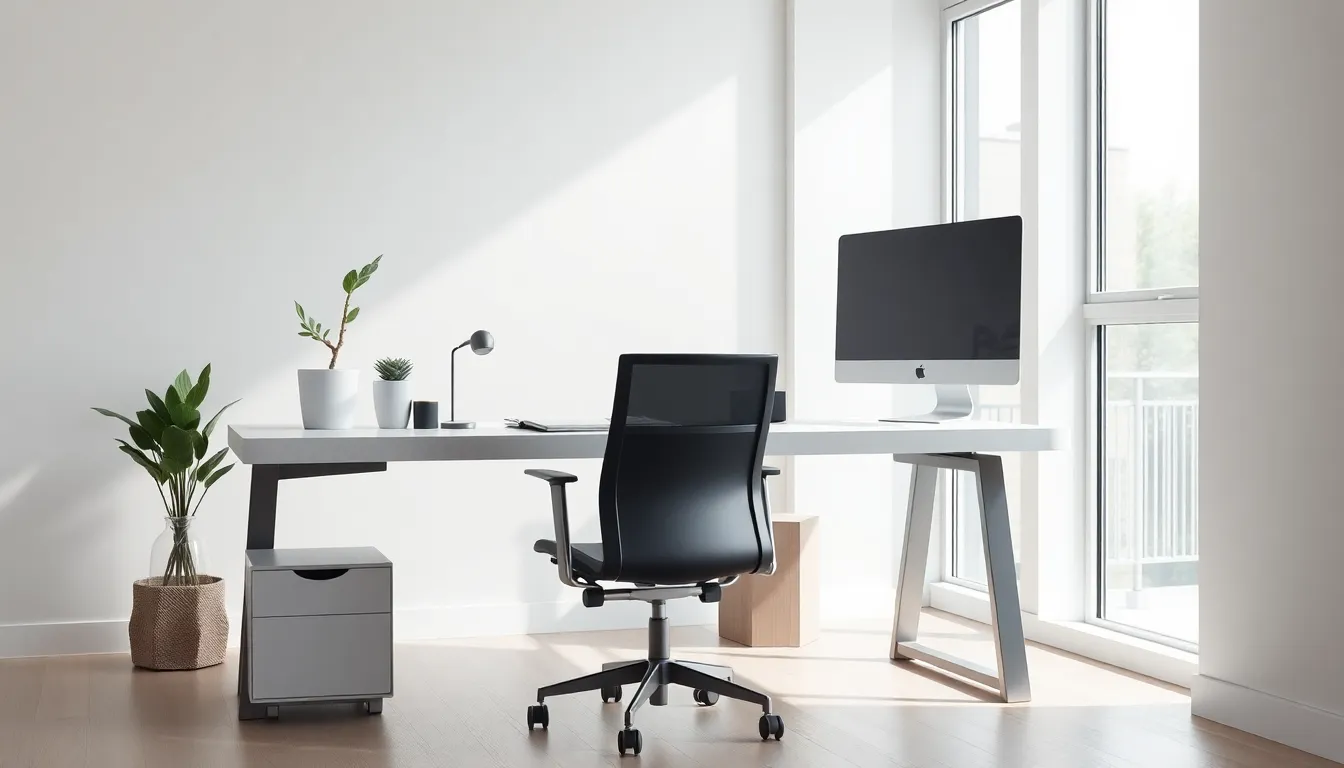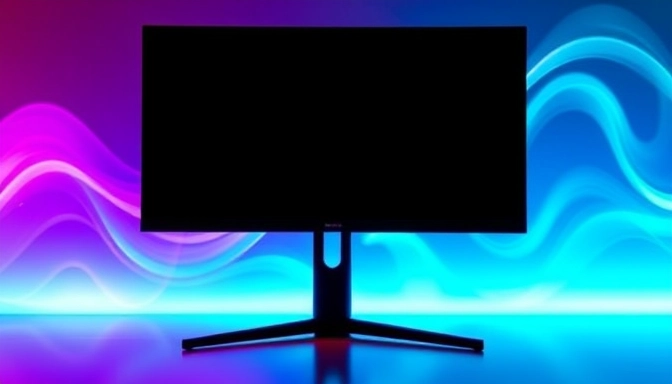In a world overflowing with distractions, the minimalist workspace emerges as a beacon of clarity and productivity. Imagine a desk so clean it could double as a runway for a high-fashion show. Gone are the days of cluttered chaos where pens mysteriously disappear and coffee mugs multiply like rabbits. With a minimalist approach, less truly becomes more—more focus, more creativity, and even more room for that all-important snack stash.
Table of Contents
ToggleBenefits of a Minimalist Workspace
A minimalist workspace enhances clarity and fosters productivity by reducing distractions. This approach creates an environment that supports focused work and promotes creativity.
Improved Focus and Productivity
Focused tasks benefit from a streamlined design. Simplified surroundings eliminate visual clutter, allowing individuals to concentrate on their work. Research shows that clean workspaces boost productivity by up to 40%. Fewer distractions lead to more efficient time management, enabling quicker decision-making and task completion. The unobtrusive environment encourages a focused mindset, where one can engage in deep work without interruptions. This clarity cultivates better results and a sense of accomplishment.
Reduced Stress and Clutter
A clutter-free workspace contributes to lower stress levels. Visual chaos often causes anxiety, making it difficult to concentrate. Minimalism creates a calm atmosphere, minimizing distractions and enhancing well-being. Studies indicate that organized spaces can reduce cortisol levels by approximately 20%. Reduced clutter promotes a sense of control, allowing individuals to feel more at ease in their environment. By prioritizing only essential items, one can enhance emotional balance and maintain a peaceful mindset beneficial for productivity.
Essential Elements of a Minimalist Workspace

Creating a minimalist workspace involves selecting key components that enhance focus and clarity. Essential elements streamline the work environment, promoting productivity.
Choosing the Right Furniture
Selecting functional furniture proves crucial in a minimalist workspace. Opt for desks with clean lines and ample surface area to accommodate necessary items without overcrowding. Ergonomic chairs support comfort for long hours, contributing to overall well-being. Consider multi-functional pieces, such as desks with built-in storage options, to minimize clutter. Favor light materials that maintain an open feel and create a sense of space. Investing in quality furniture enhances durability and aesthetic appeal, fostering long-term satisfaction.
Optimal Use of Colors and Lighting
Colors and lighting play significant roles in establishing a minimalist workspace. Neutral palettes, including whites, grays, and soft pastels, promote a calm atmosphere, reducing distraction. Incorporating one or two accent colors can personalize the space without overwhelming it. Natural light improves mood and energy levels, making windows essential when possible. Utilize task lights with adjustable settings to ensure proper illumination without harsh glare. Soft lighting supports relaxation and focus, balancing visual stimulation and comfort.
Tips for Creating a Minimalist Workspace
Creating a minimalist workspace involves intentional choices that reduce distractions and enhance focus. Implementing effective strategies supports a productive work environment.
Decluttering Your Current Setup
Start by evaluating items on the desk. Remove everything except essential tools and frequently used items. Discard papers that clutter the workspace and organize digital files on computers to alleviate overwhelm. Utilize storage solutions, such as drawers or boxes, to keep less-used items tucked away. Implement a regular decluttering schedule, such as weekly or monthly, to maintain a clean environment. Avoid accumulating unnecessary items, which can lead to chaos and distraction.
Maintaining a Minimalist Aesthetic
Choose a color palette that promotes calm and focus. Neutral tones like white, gray, or beige provide a soothing backdrop. Incorporate decorative elements sparingly, selecting pieces that resonate personally and add value to the space. Lighting plays a crucial role; natural light boosts mood, while task lighting supports specific activities. Select furniture with clean lines to reinforce a streamlined look. Ensure that everything in the workspace serves a purpose, eliminating items that don’t contribute to productivity.
Challenges of Adopting a Minimalist Workspace
Adopting a minimalist workspace poses several challenges that individuals often need to navigate.
Overcoming Emotional Attachments
Overcoming emotional attachments becomes a significant hurdle when decluttering. Many people hold onto items due to sentimental value, which complicates the decision-making process. Acknowledging the rationale behind keeping certain objects helps clarify their importance. He or she can consider digitizing photos or documents to preserve memories without physical clutter. Identifying which items provide functional value also eases the emotional burden. This approach allows for maintaining a connection to the past while embracing a cleaner workspace.
Balancing Functionality and Minimalism
Balancing functionality and minimalism proves essential for an effective workspace. Choosing multipurpose furniture that maximizes utility while minimizing visual clutter supports this balance. Ergonomic chairs and desks with integrated storage options enhance both comfort and space management. Individuals must evaluate the necessity of each item, ensuring it serves a purpose in daily activities. Finding the right blend of minimalistic aesthetics and practicality results in a workspace that fosters productivity and well-being. Carefully selected tools allow the workspace to remain organized without sacrificing efficiency.
Adopting a minimalist workspace can significantly transform one’s productivity and well-being. By prioritizing clarity and organization individuals can create an environment that supports focused work. The right furniture and thoughtful design choices play a crucial role in maintaining a streamlined aesthetic that enhances comfort and functionality.
Regularly decluttering and implementing effective storage solutions help sustain a calm atmosphere. With the right balance of lighting colors and essential items a minimalist workspace not only reduces stress but also fosters creativity. Embracing minimalism isn’t just about aesthetics; it’s about cultivating a space that empowers individuals to thrive in their daily tasks.





